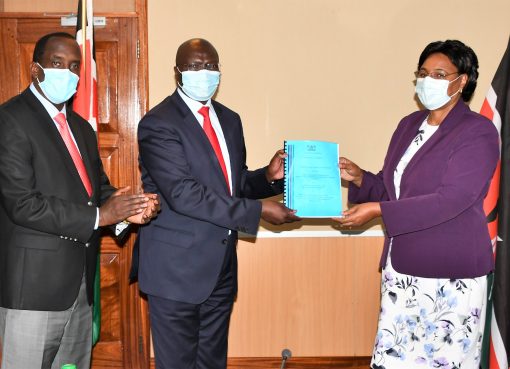The Senate has opposed the new revenue-sharing formula advanced by the Commission on Revenue Allocation (CRA), which proposes an additional Sh30 billion allocation to counties.
The plan that is set to take effect in the next financial year, would see 31 counties lose over Sh12 billion, while seven counties, mostly in Northern Kenya, would gain an extra Sh7 billion.
During a three-day mid-term review retreat in Naivasha, senators agreed that no county should lose funds under the new revenue formula.
Lawmakers from affected regions strongly opposed the proposal, arguing that it unfairly benefits counties with large landmasses at the expense of more populous areas.
Kirinyaga Senator James Murango criticised CRA’s formula, urging the Commission to retain the current model to prevent budget cuts for 31 counties.
Murango said under the new proposal by the Commission of Revenue Allocation, 31 counties will lose at the expense of seven counties, noting that the proposal favoured some of the counties in Northern Kenya based on landmass and not the poverty index.
Murang’a Senator Joe Nyutu, questioned the feasibility of securing Sh30 billion in additional county funding, citing the government’s past struggles to meet financial commitments.
He also dismissed CRA’s plan for a Sh12 billion stabilisation fund to cushion affected counties, calling it unrealistic.
Senator Nyutu said that the government has in the past failed to meet funding promises, adding the new move is suspicious and may never be met on time.
CRA Chairperson Mary Wanyonyi defended the formula, emphasising that no county would lose funds outright due to the stabilisation fund.
She explained that the additional allocation aims to correct historical marginalisation, particularly in arid and semi-arid regions.
“We are seeking an additional Sh30 billion for counties, with a portion allocated to the stabilisation fund to ensure no county suffers financial loss,” Wanyonyi stated.
She acknowledged, however, that inaccurate economic data from counties had affected CRA’s assessment of fiscal disparities, a key factor in revenue distribution.
The dispute highlights the recurring challenge of balancing county funding under Kenya’s devolved system, granted that since the introduction of devolution in 2010, revenue-sharing formulas have sparked tensions, particularly between populous counties (Central, Western, and Nyanza regions), which argue for funding based on population and service demand.
In addition, expansive and sparsely populated counties in the Northern Kenya region have argued their strong case seeking an allocation formula based on geographical size and historical marginalisation.
Past revenue allocation models have faced similar opposition, with the Senate often intervening to prevent financial losses for counties.
With the Senate united in rejecting CRA’s proposal, the Commission may be forced to revise the revenue-sharing formula to prevent budget cuts for any county.
The government must also clarify whether the Sh30 billion increase in county funding is realistic, given the country’s economic challenges and rising debt, which continue to deny the government much-needed funds.
A final decision will depend on negotiations between CRA, the Senate, the National Treasury, and county governments in the coming months.
The Commission on Revenue Allocation (CRA) is mandated by Article 216 of the constitution to recommend the basis for equitable revenue sharing among counties.
The Fourth Basis for revenue sharing (2025/26–2029/30) has been submitted for Senate consideration, with Article 217 requiring the Senate to determine the basis every five years, with the National Assembly reviewing it within 60 days.
The Third Basis (2020/21–2024/25) retained 50 per cent of the Second Basis allocation from 2019/20 with revenue allocation considering multiple population-based indices, including health, agriculture, roads, and poverty.
For the proposed Fourth Basis, CRA has suggested additional parameters including the blue economy, economic growth, water and sanitation, fiscal effort, and prudence.
Other factors to be considered include affirmative action for small counties, environmental performance, security, infrastructure needs, early childhood development (ECD), disease prevalence, afforestation, and urban service costs.
By Erastus Gichohi





